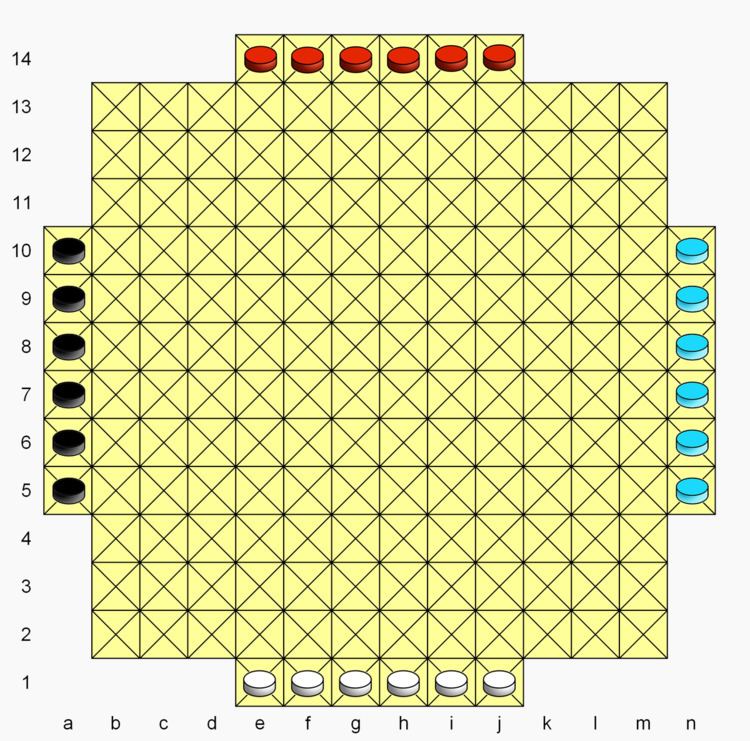 | ||
Awithlaknakwe (or Stone Warriors, or Game of the Stone Warriors) is a strategy board game from the Zuni Native American Indians of the American Southwest. The gameboard comprises 168 squares. Two or four may play, with players identified as North, West, South, and East.
Contents
The game was described by Stewart Culin in his book Games of the North American Indians (1907).
Equipment
The gameboard is a 12×12 square grid with six extra squares centered on each of the four sides, totaling 168 squares. Diagonal lines run through each square (the diagonal lines are called trails; the orthogonal lines are called canyons). Each player has six warriors, and a seventh man named Priest of the Bow.
The historical board was cut into stone slabs, and pieces were small discs of pottery with tops either plain or having a hole in their centers to differentiate ownership. The Priest of the Bow was distinguished from friendly men by being somewhat larger.
Game rules
Each player starts the game with his six warriors on the six squares nearest to him (or home rank). The goal is to bring one's men to the opponent's home rank, while capturing as many enemy pieces as possible. However, the winning conditions of this ancient game are not completely defined (see "Incomplete rules" section below).
Two players
Players sit at opposite sides of the board; North plays against South.
Four players
North and West are partners against South and East. Each team has one Priest of the Bow (not two).
Incomplete rules
The rules described by F. H. Cushing and reported by Culin, and subsequently by Bell and Murray, lack specificity on some points:
